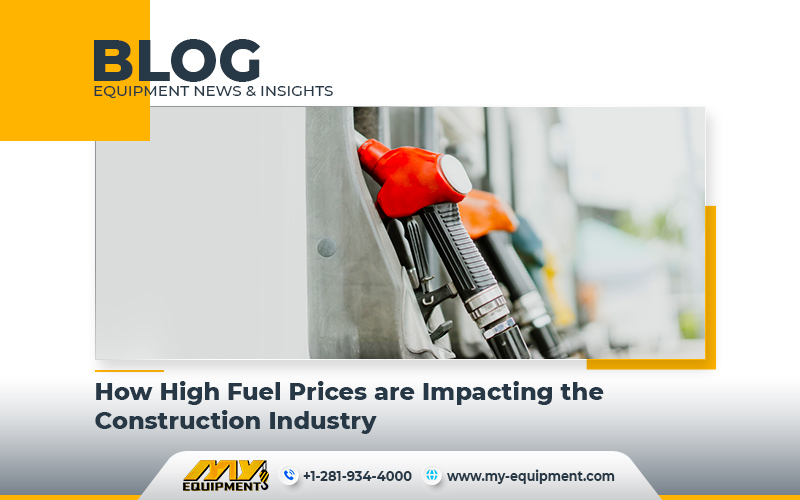In the last couple of years, the economy of construction industry seems to have been completely upended. First, restrictions placed on the supply chain put a lot of pressure on the routes that are used to source heavy machinery, building materials as well as other construction equipment and tools. Following that, issues with the supply chain and other market factors caused a lack of materials, components, and labour, which ended up increasing the price of those things as well. The current issue that the industry is facing is the dramatic rise in fuel costs.
In addition to all these escalating expenses of building materials and labour, fuel costs have climbed up by 74% in the past year. According to a study, the cost of operating heavy equipment nowadays includes the fuel costs to the extent of approximately 42%. Field labour and parts, lubricant, and track or tyre wear and tear are some additional running expenses that heavy equipment owners have to deal with. This year on June 6th, the average price of on-highway diesel fuel reached an all-time high, rising to $5.81 a gallon, which is $2.59 more than the previous year.
Contractors with significant projects already underway are particularly impacted by such fuel price fluctuations. There are often no remedies available for contractors to recover the unexpected increase in fuel expenses because these bids were accepted months, or on occasion even years ago. While contractors account for other expenses such as the purchase of a CAT 140M motor grader, it is impossible to predict how these external factors might impact the project.
Considering the fact that profit margins for major civil projects circle around 3%, such disparities between what contractors pay against what they are able to charge are not financially viable, according to Nick Holsinger, the strategic accounts manager of Equipment Watch. And it is expected things are just going to get worse going forward. Although the construction industry hailed the 1.2 trillion dollar infrastructure package’s passage last November, the majority of that money has yet to be spent. It is fair to question just what would take place when all fifty states and numerous localities all commission new projects and start construction. How would the industry deal with several states attempting to purchase materials, recruit personnel, and fuel machinery, with too much cash constantly seeking fewer available building supplies and consequently increasing inflation?


 1400 Broadfield Blvd, Houston, TX 77084,
USA.
1400 Broadfield Blvd, Houston, TX 77084,
USA.